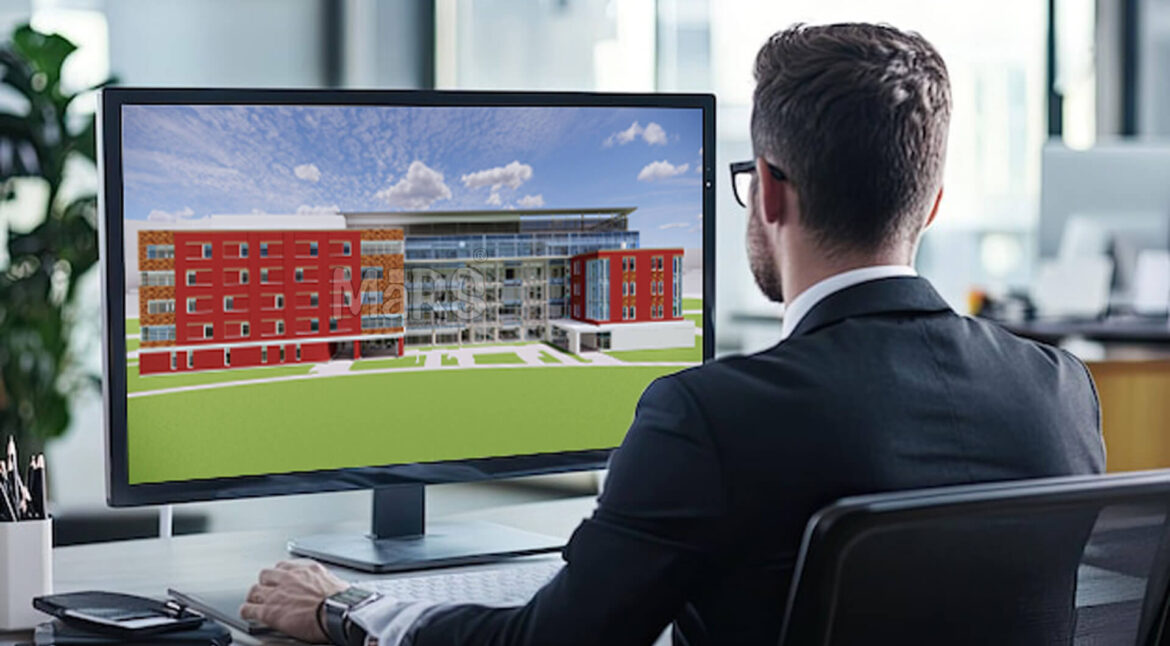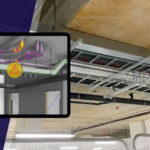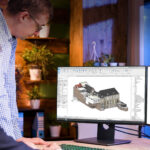In the fast-paced areas of architecture and construction, the use of modern technology has generated opportunities for more precise, efficient, and innovative design processes. Among these technologies, Point Cloud to BIM (Building Information Modeling) services stand out as an important advancement. This article explores the reasons why Point Cloud to BIM services are rapidly becoming more and more popular in modern building design.
Understanding Point Cloud to BIM
Point Cloud to BIM is the process of using BIM software to convert point cloud data—which was collected using laser scanning technology—into complex 3D models. With the help of this technique, architects, engineers, and construction specialists can work with precise data right from the start of a project because it generates a highly accurate digital model of a physical structure.
The Accuracy of Point Cloud Data
The exceptional accuracy of point cloud data is one of its main advantages. A complete and precise 3D model of a building or location is produced by laser scanners, which can gather millions of data points per second. This level of specificity is essential for:
- Architectural design
- Structural analysis
- Facility management
By converting these detailed point clouds into BIM models, professionals can ensure that every aspect of the design is based on real-world measurements, reducing the margin of error significantly.
Advantages of Point Cloud to BIM Services
Enhanced Collaboration
Better collaboration between different stakeholders in a construction project is made easier with Scan to BIM services. The detailed 3D models provide a common reference point, enabling:
- Architects visualize intricate design elements
- Engineers to assess structural integrity
- Contractors must plan construction phases accurately
By ensuring that everyone is on the same page, this collaborative approach lowers misunderstandings and increases project efficiency.
Improved Project Planning
Detailed BIM models derived from point cloud data are valuable for project planning. They allow for precise:
- Quantity take-offs
- Cost estimations
- Scheduling
With accurate models, project managers can foresee potential issues and address them proactively, leading to smoother project execution and reduced delays.
Renovation Projects
Point Cloud to BIM is particularly beneficial for retrofit and renovation projects. Existing structures often lack up-to-date documentation, making modifications challenging. By scanning the building and converting the data into a BIM model, professionals can gain an accurate understanding of the current conditions, facilitating:
- Accurate design integration
- Identification of structural issues
- Efficient space planning
Sustainability and Efficiency
The construction industry is increasingly focused on sustainability, and Point Cloud to BIM services contribute significantly to this goal. The exact data allows for the following:
- Optimized material usage
- Energy-efficient design
- Minimized waste
By using accurate models, construction projects can be planned and managed with sustainability in mind, reducing their environmental footprint.
Technological Integration
Laser Scanning Technology
The foundation of Point Cloud BIM services is laser scanning. To determine the size and arrangement of objects inside a building or site, laser beams are released. This technology is essential for:
- Capturing intricate details
- Ensuring measurement accuracy
- Speeding up the data collection process
BIM Software
After the point cloud data is collected, specialist software is used to process and turn it into a 3D BIM model. Significant BIM software like Revit, ArchiCAD, and AutoCAD facilitate point cloud integration, making the creation and modification of models easy. These software programs make the following possible:
- Detailed architectural modeling
- Structural analysis
- MEP (Mechanical, Electrical, and Plumbing) design
Cloud Computing
The integration of cloud computing with Point Cloud to BIM services enhances collaboration and data accessibility. Cloud platforms enable:
- Real-time data sharing
- Collaborative model review
- Remote project management
Project teams can collaborate more effectively, regardless of their physical location, by utilizing cloud technology.
Future Trends in Point Cloud to BIM
Automation and AI
Artificial intelligence and more automation are expected to be incorporated into Point Cloud for BIM services in the future. These developments will make possible:
- Automated feature extraction
- Intelligent data analysis
- Predictive modeling
AI and automation will speed up and improve the conversion process, creating new opportunities for intricate design and analysis.
Virtual and Augmented Reality
Augmented Reality (AR) and Virtual Reality (VR) are going to change the way we work with BIM models. Professionals can use these technologies to:
- Visualize designs in immersive environments
- Conduct virtual walkthroughs
- Enhance client presentations
Better design choices and client satisfaction will result from the design process being more interactive and simple when VR and AR are integrated with Point Cloud to BIM.
Integration with IoT
However, another trend that will impact Point Cloud BIM services is the Internet of Things (IoT). Real-time building performance data from IoT devices can be incorporated into BIM models for the following purposes:
- Enhanced facility management
- Predictive maintenance
- Energy optimization
Buildings that are smarter, more responsive, and able to adjust to changing conditions and user needs will be made possible by the integration of IoT and BIM.
Conclusion
Point Cloud’s integration with BIM services has greatly advanced building design. These services, which enhance communication and offer highly accurate data, are expected to become standard procedures in the construction sector. Automation, AI, VR, AR, and IoT integration will further improve Point Cloud’s capabilities and applications to BIM as technology develops, securing Point Cloud’s place as the architectural design industry’s future.
FAQS
What are the benefits of using Point Cloud for BIM?
The benefits of Point Cloud to BIM include improved accuracy in design, better collaboration among stakeholders, more efficient project planning, and enhanced sustainability. These services reduce errors and streamline the construction process.
How does Point Cloud to BIM improve building design?
Point Cloud to BIM offers several advantages, including: Accurate as-built documentation, Enhanced design accuracy, Improved collaboration, Cost savings.
Is Point Cloud to BIM the future of building design?
Point Cloud to BIM is rapidly gaining traction and is becoming an essential tool for modern building design. As technology continues to advance, we can expect Point Cloud to BIM services to play an even more significant role in the industry.
Can Scan to BIM be integrated with other design software?
Yes, Point Cloud to BIM data can be integrated with various design software, such as AutoCAD and SketchUp, for seamless workflows.
Can Point Cloud to BIM be used for interior design projects?
Yes, Point Cloud to BIM can be used to create detailed 3D models of interior spaces, facilitating accurate space planning and furniture placement.
What industries can benefit from Scan to BIM services?
Industries such as architecture, construction, engineering, and facility management can greatly benefit from Point Cloud to BIM services. These industries use BIM models for design, analysis, and project management, making the technology highly valuable.
What technologies are involved in Point Cloud’s integration with BIM?
Technologies involved in Point Cloud to BIM include laser scanning for data capture, BIM software like Revit and AutoCAD for model creation, and cloud computing for data sharing and collaboration.
How does Point Cloud to BIM contribute to sustainable building design?
Point Cloud to BIM contributes to sustainable building design by enabling precise material usage, optimizing energy efficiency, and reducing waste. The accurate models help in planning projects with minimal environmental impact.
What is the future of Point Cloud to BIM in the construction industry?
The future of Point Cloud to BIM in the construction industry includes advancements in automation, AI-driven processes, VR/AR integration, and IoT connectivity. These innovations will make building design more efficient, interactive, and data-driven.




